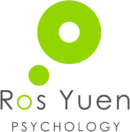Attachment Issues Therapy Adelaide
The attachment bond as an essential feature of the human condition was discovered by psychiatrist, John Bowlby. Together with psychologist, Mary Ainsworth, he studied the attachment bond as an essential component of human development throughout the lifespan. More recently, the validity of the attachment theory has been supported by the use of brain imaging technology.
What is Attachment?
Human infants are pre-programmed to bond with at least one significant parent caregiver, usually the mother. The emotional attachment arising between the infant and the parent is the first interactive relationship based mainly on nonverbal communication. This first bonding experience becomes the foundation for all future close relationships. Children who experienced confusing, frightening or fragmented communications during their infancy often grow into adults with poor insight into their own emotions and other people’s feelings. This lack of insight limits their ability to build or sustain successful relationships. Further, brain development studies show that the quality of attachment plays a role in shaping the brain.
Attachment styles
There are two main attachment styles, secure and insecure styles. In turn, insecure attachment manifests in various ways.
The secure attachment style results when both mother and infant can sense each other’s feelings and emotions. An infant feels safe and comfortable when the mother responds to the child’s cries reliably and accurately interprets the infant’s changing needs, not necessarily all the time but the majority of the time.
As an adult, the person will be able to create meaningful relationships, be empathetic and set appropriate boundaries. This person is deemed to have a secure attachment style. Secure adults offer support when their partners are distressed and they are able to go to their partners for comfort and be comforted. Their relationship tends to be honest, open and equal with both partners feeling independent, yet deeply connected to each other.
Insecure attachment Issues
When the attachment bond fails to provide the child with a secure structure, understanding and safety, insecurity sets in. There are several kinds of insecure attachment.
Dismissive avoidant attachment style
When the parent is unavailable or self-absorbed, children get lost in their internal worlds, avoiding any close, emotional connections. As adults, these persons are physically and emotionally distant. People with a dismissive avoidant attachment have the tendency to emotionally distance themselves from their partners. They have the ability to shut down emotionally.
Fearful avoidant attachment style
When the parent is inconsistent or intrusive, the child learns to become anxious and fearful, never knowing what to expect. As adults, they are ambivalent, available one moment, rejecting the next. They are afraid of being too close or too distant from others. They seem to know that you need to go towards others to get your needs met but if you get too close to others, you can expect to be hurt. In other words, the person who is the safe one is also the scary one. As adults, these individuals tend to be in emotionally dramatic and rocky relationships. They are afraid of being abandoned but also struggle to be intimate.
Anxious preoccupied attachment style
Adults with an anxious attachment style often look to their partners to rescue them. Although they are seeking for a sense of safety and security, their behaviour pushes their partners away. When they feel unsure of their partner’s feelings and unsafe in their relationship, they often become clingy, demanding or possessive toward their partner. They may also interpret independent actions by their partner as affirmation of their fears.
Can attachment styles change and can a psychologist help?
Covering Beulah Park, Erindale, Glenside, Kensington Gardens, Kensington Park, Leabrook, Magill, Marryatville, Norwood, Toorak Gardens, Tranmere and many other suburbs across Adelaide.
Book a Telehealth Appointment
I understand that life can be busy, and that it’s not always easy to commit to regular in-person counselling sessions, especially when coordinating couples or families. Telehealth appointments (via Zoom or phone) provide the opportunity to meet online from the comfort of your home or another safe space, helping to reduce travel time, ease scheduling pressures, and maintain consistency when attending the clinic isn’t possible.
While I recommend beginning with one or two face-to-face sessions to build a strong foundation, telehealth offers the flexibility to continue your counselling journey while balancing other life commitments. Whether you’re seeking individual, couples, or family counselling, this option ensures therapy remains accessible and supportive in a way that works best for you.
Ready to get started? Book your telehealth appointment online today, or contact me directly for more details.




